
.jpg) Dear Members:
Dear Members:
We have a special newsletter this month. It’s the largest and most comprehensive BOB Tales to date. In addition to our regular articles and commentary, we are including a report on the 2016 National Proton Conference (NPC) held in New Orleans, LA in January.
It was a blockbuster of a conference that focused on the critical issues and obstacles facing the proton movement. Attendance was at record levels and proton centers from around the nation and the world were represented. I have attended all four annual conferences and I have never seen clinical and administrative proton center representatives more involved and engaged in the process of advancing proton therapy.
I was humbled and greatly honored at the conference by receiving a Lifetime Achievement Award for “pioneering leadership in increasing patient access to proton therapy.” Clearly this is recognition of the power and influence of our group and the voice we have become in the proton world.
In accepting this award, I acknowledged the real hero of proton therapy, the pioneer, Dr. James Slater, as well as Loma Linda University Health for taking the risk that began the proton movement 26 years ago. I also thanked my daughter, Deb Hickey, who works so much behind the scenes and does most of the work, for which I get most of the credit, and my wife, Pauline, who has given me so much support and put up with my 24/7 obsession with this “ministry.”
I also thanked Dr. Lynn Martell, who was at the conference, for the role he played in the success of the BOB. It was Lynn who recognized the potential for our group almost 16 years ago, encouraged me to press on, and provided support in so many ways.
Finally, I acknowledged our more than 8,000 members from proton centers all over the world. “They are smart; they are informed; they are responsive; and they give back,” I said. “Our members give back in many ways. Several hundred of them are on various patient reference lists, ready to talk with newly diagnosed men at any time, day or night.”
“When we call on our members to respond to a proposed policy change by a medical insurer, they react in overwhelming numbers. We ask our members to support proton research. How do they respond? Forty percent routinely support proton research by writing checks or designating part of their estate for proton research and other proton-related efforts. To date, our group has contributed $11.5 million. Our members are making a difference and I’m proud to be associated with these wonderful people.”
I closed by expressing my frustration over the fact that proton therapy, which has worked so well for tens of thousands of patients over many years is still so controversial with medical insurers. I said, “I have to believe that with some of the smartest people in the world associated with proton technology, we can figure out a way to compel private insurers to cover proton therapy for prostate cancer and other tumor sites. That’s my wish for 2016 and I pledge the support of our organization to do whatever we can to help make that happen.”
The good news is that action coming out of the 2016 National Proton Conference is heavily focused on dealing with insurance denials head-on. I found this particularly encouraging. Some of the details are covered in this month’s BOB Tales.
With 22 proton centers in the U.S., 14 more in construction and planning, and the explosive growth of proton centers around the world, I can only imagine what NPC 2017 will look like.
As always, we welcome your feedback and suggestions for future newsletters. Just send an email to DHickey@protonbob.com.
Bob Marckini
To print the BOB Tales newsletter or view the newsletter with a larger font size, click here for the PDF file.
In This Issue:
- New prostate cancer imaging techniques
- Prostate cancer detected with urine test
- Tool determines risk of prostate cancer death
- SPECIAL: National Proton Conference recap
- Debate over PSA screening—member feedback
- Tennessee Legislative battle
- A fond farewell to an "honorary" BOB member
- Not all doctors are created equal
- Members tell us why they gave back
- Misdiagnoses in the U.S.
- Dog sniffs out cancer better than lab tests
.jpg)
New Prostate Cancer Imaging Techniques
Thomas Jefferson University: Blood Test
Researchers at Thomas Jefferson University have developed a new method to image the prostate. The test, used in a 25-patient study, actually detected more cancerous lesions than pathologists found when they examined the prostate glands after they had been removed.
The imaging technique uses a novel biomarker that latches on to cancerous cells within the prostate. This agent is given intravenously to patients before a PET CT scan.
“Current imaging tests are inexact because they all require an invasive (and costly) biopsy, which has the potential for complications; they can miss 66 percent of cancers,” says Mathew Thakur, Ph.D., professor of Radiology at Sidney Kimmel Medical College of Thomas Jefferson University and the Director of the Laboratories of Radiopharmaceutical Research and Molecular Imaging.
“The prostate is the size of a ping-pong ball, and cancer grows like seeds, not in substantial lumps,” Dr. Thakur explains. “Physicians cannot see where these small seeds are, so the gold standard is to take 12 biopsy samples of tissue in hopes of detecting whatever cancer exists…”
In the study, the test identified 105 of 107 cancerous lesions found in pathological exams of the removed glands, as well as nine lesions that the pathologic exam did not find.
“The VPAC1 receptors appear before the cell changes its microscopic appearance, so our imaging test can find them when pathologists may not be able to detect them,” Dr. Thakur says.
A larger study to confirm these findings is planned.
OPKO Health: Blood Test
OPKO Health (OPK) has developed a new procedure involving a blood draw that aims to detect prostate cancer. “We can eliminate 60 percent of the biopsies,” said David Okrongly, the firm’s president. Furthermore, the test costs about $1,000 while a biopsy can run about $2,000 or more.
OPKO calls its approach the 4-K score, because it evaluates four enzymes. At this stage, the PSA test will likely remain the first screen for prostate cancer because it’s the most cost efficient, but newer imaging techniques may reduce or eliminate the need for painful biopsies.
Prostate Cancer Detected With Urine Test
Researchers from the United Kingdom have developed a new device to detect prostate cancer. The product, called Odoreader, is an “electronic nose” that can smell prostate cancer in the urine with a gas chromatography (GC) sensor in a non-invasive way.
The study involved 155 men—58 with prostate cancer, 24 with bladder cancer, and 73 with hematuria (characterized by blood leaking into urine). Results from Odoreader indicated that through detectable patterns of volatile compounds, urine samples can show the presence of urological cancers.
“There is an urgent need to identify these cancers at an earlier stage when they are more treatable as the sooner a person is diagnosed the better,” says one of the developers, Chris Probert, a professor at the University of Liverpool. After more testing, the researchers aim to fund a full clinical trial and commercially develop the device. They are hoping it will allow the technology to be used at hospitals and doctors’ clinics for fast, inexpensive and accurate diagnosis.
Read the full story. The study’s findings are also published in the Journal of Breath Research.
Tool Determines Risk of Prostate Cancer Death
Researchers at the University of Copenhagen have found a new prognostic biomarker that may help determine the risk of dying from prostate cancer. The neuropeptide pro-NPY is a protein specific to prostate cancer cells. It could help identify whether newly diagnosed men require immediate treatment or if they can avoid treatment in lieu of “active surveillance.”
Researchers measured concentration changes in thousands of proteins in both normal and prostate cancer tissue across 750 patients. They discovered that the prostate tumors exhibit numerous metabolic alterations including exacerbated activity of mitochondria. Among the 9,000 proteins identified, pro-NPY was demonstrated to exhibit high levels in a subgroup
of prostate cancer samples.
Proteins are key effectors of cellular functions. Therefore, a better understanding of the protein signaling pathways deregulated in prostate cancer could lead to better preventive and therapeutic strategies for the treatment of this disease.

SPECIAL: National Proton Conference (NPC) 2016 Recap
The National Association for Proton Therapy (NAPT) held its fourth annual National Proton Conference from January 19 – 22. The event took place in New Orleans, LA at the elegant Roosevelt Hotel, a short walk from the French Quarter and the famous Bourbon Street attractions.
Who Was There
.jpg) This was the largest NPC ever, with more than 200 in attendance and many more live-streaming from around the world. Sixteen operating proton centers in the U.S., and several from overseas, were represented. Several other proton centers, which are under construction, were also represented.
This was the largest NPC ever, with more than 200 in attendance and many more live-streaming from around the world. Sixteen operating proton centers in the U.S., and several from overseas, were represented. Several other proton centers, which are under construction, were also represented.
There were 21 exhibitors and more than 40 speakers. Radiation oncologists, including clinical leaders from many of the centers, along with physicists, and senior administrative officials were all in attendance. It was an excellent representation of the “who’s who” of the proton world.
NAPT’s new executive director Todd Ketch was the master of ceremonies for the event and he did a masterful job keeping a jam-packed program on track.
Overview of Topics Discussed
Space does not permit us to cover all the topics discussed and presented at this year’s NPC. There were dozens of presentations and extraordinary amounts of data presented on topics including a global perspective on proton therapy; the latest developments in proton therapy; developments in proton therapy research; review of various randomized clinical trials; clinical and technological advances; new developments in imaging and treatment planning; the New York Proton Center consortium model; coding, coverage and payment; legal perspectives; revenue cycle best practices; mobilizing the patient community; an overview of the 2015 published proton therapy evidence and summary of the 2016 updates to the model coverage policy; and results and implications of the NAPT survey.
A considerable amount of attention was focused on the challenges faced with private insurance companies covering proton therapy for several tumor sites, including prostate cancer. There is some progress being made as you will see later in this report.
Following are some highlights of the talks, panels, and displays that we think will be of interest to our members.
 Latest Cancer and Proton Statistics
Latest Cancer and Proton Statistics
Overall, cancer death rates have declined 20 percent from their peak in 1991, including all four major cancer sites: lung, colorectal, breast, and prostate. In the U.S. this translates to the avoidance of 1.18 million deaths from cancer. This is due in part because of the extraordinary advances in radiation therapy, including the growing acceptance of proton therapy in recent years.
However, proton therapy has faced significant challenges during that timeframe—the journey has not been easy.
Even with 22 operating proton centers in the U.S. today (and 14 under construction), fewer than 1 percent of all radiation treatments are proton therapy. This year, about 1.6 million people in the U.S. will be diagnosed with cancer and about 960,000 of them will receive radiation. One-third of these could have benefitted from a consultation to explore proton therapy, but fewer than 10,000 will receive proton therapy. Some of the reasons for this include:
- The small number of proton centers and treatment rooms vs. conventional radiation
- The high cost of building proton treatment centers—a multi-gantry proton treatment facility costs $150 to $250 million, while an X-ray treatment room costs about $5 million
- Personnel costs to support a proton facility are higher than for conventional radiation
- Resistance by medical insurers to cover proton therapy due to the
lack of clinical evidence demonstrating the superiority of proton therapy. Unfortunately, provider organizations, medical and
healthcare groups often do not understand proton therapy - Resistance by some in the medical world to recognize and accept proton therapy
Change is Coming
The world is changing; technology is changing. Developing proton technologies are driving down the cost of treatment; single-treatment-room proton centers are helping to make the capital cost more affordable to smaller medical institutions; and clinical trials under way and planned will show the benefits of proton therapy over conventional radiation, justifying the higher initial cost, with the expectation of lower long-term cost to the patient and insurer.
One example of this point, discussed at the conference, was the benefit of using proton therapy for treating tumors in or near the chest, such as breast cancer. Significantly lower doses of radiation are delivered to the heart, lung, and liver when treating tumors like these with protons.
The same is true when treating head and neck malignancies. Data presented at the conference demonstrated that the use of proton therapy for these tumors improved clinical outcomes, reduced side effects, and reduced the cost of follow-up care including hospitalizations and emergency center visits.
New Research
Several speakers reviewed a number of basic and clinical research efforts under way at several proton centers. Although there are far too many to discuss all of them, a few are mentioned here:
Proton Collaborative Group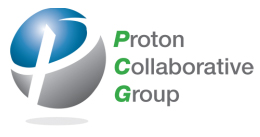
The PCG is a nonprofit organization whose objective is to constitute a group of clinical oncology research centers dedicated to cooperative clinical trials. The intent of the trials is to improve the survival outcome and quality of life of adults and children with cancer through the conduct of high-quality clinical trials. Dr. William Hartsell, a member of the PCG board, gave a presentation explaining PCG’s mission, make up, and efforts under way. There are hundreds of patients involved in clinical trials overseen by PCG. Some examples include:
- Evaluation Tracking Project: A Prospective Chart Review
of Patients Treated with Proton Therapy - A Phase III Prospective Randomized Trial of Standard-fractionation versus Hypo-fractionation with Proton Radiation Therapy for Low Risk Adenocarcinoma of the Prostate
- Phase III Study of Mildly Hypo-fractionated Image Guided Proton Beam Radiation Therapy with or without Androgen Suppression for Intermediate Risk Adenocarcinoma of the Prostate
- Phase II Protocol of Proton Therapy for Partial Breast Irradiation in Early Stage Breast Cancer
- Phase II Study of Postoperative, Cardiac-Sparing Proton Radiotherapy for Women with Stage III, Loco-Regional,
Non-Metastatic Breast Cancer - A Phase I/II Study of Hypo-fractionated Proton Therapy
for Stage II-III Non-Small Cell Lung Cancer
Radiotherapy Comparative Effectiveness Consortium
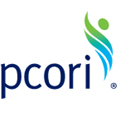 An update was provided by another group on the PCORI Pragmatic Randomized Trial of Proton vs. Photon Therapy for Breast Cancer. PCORI is the Patient-Centered Outcomes Research Institute, an organization located in Washington, D.C., that funds research aimed at determining which of many healthcare options available to patients is best.
An update was provided by another group on the PCORI Pragmatic Randomized Trial of Proton vs. Photon Therapy for Breast Cancer. PCORI is the Patient-Centered Outcomes Research Institute, an organization located in Washington, D.C., that funds research aimed at determining which of many healthcare options available to patients is best.
As part of the many clinical research efforts under way, thousands of proton patients are being followed on clinical trial registries for the purpose of collecting observational data that can be used to support research efforts.
Breast Cancer
A new randomized clinical trial of proton vs. photon therapy for patients with stage
II and III breast cancer was discussed at the conference. It is already known that survival rates are significantly improved using both types of radiation after both lumpectomy and mastectomy. But the risk of heart disease is much higher with photon radiation, because 10 times more radiation reaches the heart when photon radiation is used vs. proton for treating the left breast. And since the lung also receives significantly more radiation when photon radiation is used, proton should produce better results here as well.
Several institutions are participating in this trial, and while the theoretical advantages of proton are well known, this study should help determine whether the proton benefits are clinically meaningful. This will be an important trial to watch.
Imaging and Treatment Planning
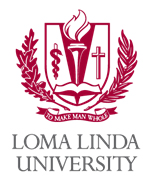 Reinhard Schulte, MD, a professor at Loma Linda University, showed some of the advances in imaging and planning for treating many different types of cancer. He pointed out that proton therapy is so precise, that more accurate imaging can make treatment even more effective than in the past.
Reinhard Schulte, MD, a professor at Loma Linda University, showed some of the advances in imaging and planning for treating many different types of cancer. He pointed out that proton therapy is so precise, that more accurate imaging can make treatment even more effective than in the past.
Dr. Schulte also provided an update on one of the most exciting technologies under development—proton CT imaging. There are still many technical challenges that need to be addressed, but when fully operational, proton imaging will offer significant advantages over current imaging technologies.
On one of his slides, Dr. Schulte outlined the reasons why proton is the ideal particle for modern radiation therapy:
- Controllable both in lateral and depth dimensions
- Maximum dose can be localized to the target
- Has an ionization density pattern that allows damage to normal tissues to repair and recover from radiation injury
- Can be used with precision, in principle, for all major tumors in radiation oncology (not just the rare and difficult ones nobody else wants to treat)
- Can be delivered by manageable technology
- Has many potentials not yet explored nor tested in trials
Other Research
 Other presentations and panels reported on progress being made through multi-institutional studies in several areas. Many
Other presentations and panels reported on progress being made through multi-institutional studies in several areas. Many
of these clinical trials are being funded by the National Cancer Institute. Clinical trials are under way to treat non-small cell
lung cancer, glioblastoma, stage III lung cancer, hepatocellular cancer, cholangiocarcinoma, esophageal cancer, and many other cancers.
Expected outcomes include improved disease control, improved dose distribution, reduced rate of secondary malignancies, and superior early and late stage toxicity resulting in higher quality of life after treatment. The data are mounting and the evidence is clear: Proton therapy is an extraordinary technology with an excellent track record, and with enormous potential going forward.
This is just a sampling of the clinical research under way and reported at NPC 2016.
Projected Proton Growth
According to healthcare consultant, Tim Remus PhD, U.S. proton therapy growth is projected to be strong over the next 10 years. Most of the growth (65 to 100 percent) is expected to be in treating lung, head and neck, gastrointestinal, liver, brain, and bone cancers. Much of the growth in these areas includes pediatric patients. And, while prostate cancer volume has been rather flat over the past five years, it still represents 65 percent of proton patients today, and is projected to grow about 35 percent over the next 10 years.
As stated previously, fewer than 1 percent of patients receiving radiation treatment are receiving proton therapy. So the growth potential is significant. Newer technologies, such as scanning beam (pencil beam), real-time imaging, including MR-guided radiotherapy, and improved patient positioning will aid in this growth.
Proton Therapy Worldwide
Proton therapy is receiving much attention in Europe and Asia. Several new proton centers are under construction or in the planning stages in these regions.
In China, cancer is the leading cause of death. The mortality rate from cancer is three-times that of the U.S. mostly due to lack of early diagnosis and proper treatment. The three most deadly cancers in China are lung/bronchus, stomach, and liver. The five-year survival rate from these cancers is a low 31 percent.
 Radiation therapy in general and proton therapy in particular could have a huge impact on survival in China, according to Adam Sun, Chief Investment Officer, Concord Medical Services, who spoke at the NPC. While the U.S. has 20 operating proton centers, China has only three particle therapy centers. That is all changing. Many proton treatment centers are planned for China as well as surrounding markets, including Taiwan and Singapore.
Radiation therapy in general and proton therapy in particular could have a huge impact on survival in China, according to Adam Sun, Chief Investment Officer, Concord Medical Services, who spoke at the NPC. While the U.S. has 20 operating proton centers, China has only three particle therapy centers. That is all changing. Many proton treatment centers are planned for China as well as surrounding markets, including Taiwan and Singapore.
New York Proton Center Consortium
One novel approach presented at the conference was the New York Proton Center Consortium (NYPC). This is a collaborative effort by Memorial Sloan Kettering, Mount Sinai Hospital, and Montefiore Medical Center. The three medical facilities have combined efforts, along with pooled capital investment, to create a comprehensive, 3-gantry, 1-fixed beam proton treatment center.
These medical facilities are collaborating with ProCure New Jersey to develop infrastructures to advance training of medical staff, do research, and increase patient access to proton therapy in the region. Ten hospitals will be providing patients to the NYPC consortium.
This is a fresh approach to establishing a proton treatment center and could help break down the barriers to expanding the availability of proton therapy to more patients worldwide. We will be sharing more about this program in future BOB Tales.
Results of NAPT Survey
 Dr. William Hartsell, MD, Northwestern Medicine Chicago Proton Center, spoke on access to proton
Dr. William Hartsell, MD, Northwestern Medicine Chicago Proton Center, spoke on access to proton
beam therapy as well as results of the NAPT survey. He reported that about 1.7 million people in the U.S. will be diagnosed with cancer this year. The top three cancers for men will be prostate, lung, and colorectal. For women: breast, lung and colorectal. And, cancer deaths were highest for lung, breast, prostate and colorectal cancer.
Some results from the survey are:
- The number of patients treated with protons is steadily increasing—approximately 7,000 people were treated with protons in the U.S. in
2014, double the number treated five years ago. - The number of patients treated for “traditional” indications for protons
—pediatric, brain, base-of-skull tumors, and intraocular melanoma—continues to gradually increase. - There is a shift to “new” disease sites treated, especially with an increase in breast, lung, head and neck, and gastrointestinal tumors.
- The number of patients treated for prostate cancer has remained relatively stable.
- Complexity of proton treatments is gradually increasing over time.
Insurance Coverage
.jpg) Considerable attention was given to the subject of medical insurance coverage. Several panels discussed different aspects of private insurer coverage of proton therapy for many tumor sites, prostate cancer among them.
Considerable attention was given to the subject of medical insurance coverage. Several panels discussed different aspects of private insurer coverage of proton therapy for many tumor sites, prostate cancer among them.
Reasons for denials included:
- Experimental or investigational; no randomized controlled trials
- Not medically necessary; IMRT is effective and cheaper
- Insufficient medical evidence supporting the use of proton for the specific diagnosis
 The recent success with a state regulation in Oklahoma was discussed. The result:
The recent success with a state regulation in Oklahoma was discussed. The result:
“A health benefit plan … that provides coverage for cancer therapy shall be prohibited from holding proton radiation therapy to a higher standard of clinical evidence for medical policy benefit coverage decisions that the health plan requires for coverage of any other radiation therapy treatment.” 36 Okl. St. 660.9b(A).
This was a huge win and it opened the door to turning around a higher percentage of proton coverage denials in Oklahoma. A similar House Bill is being pursued in Tennessee. You can read more about this bill in our “Member Spotlight” section.
“It’s All About the Benjamins, Baby”
This was the title slide of a presentation given by Wendell Potter, senior analyst at The Center for Public Integrity. Mr. Potter, who was once an insurance industry insider, spoke about the consolidation of medical insurers and the efforts to improve profitability within the industry. This often happens at the expense of the patients who are finding it more and more difficult to get leading edge medical care due to lack of coverage. Sadly, cancer patients, in particular, are vulnerable to these consolidations and policy changes within the medical insurance industry.
Proton Centers Helping to Drive Appeals
On a broader scale, multiple strategies were put forth by panelists on appealing insurance denials at each level, all the way to outside, independent review. One commented, “The day of patients winning appeals on their own is over.” Medical insurers have large staffs and multiple barriers in place to discourage appeals. Stronger, coordinated appeals, strategically crafted, with comprehensive back-up data, and physician involvement are needed today.
The good news is that proton centers are getting smarter about appealing denials on behalf of patients. They are staffing their insurance departments with full-time individuals whose job it is to work with patients and physicians to prepare letters of medical necessity, write appeals, and provide comprehensive support documentation. Some appeal packages are upwards of 60 pages in length. This is a costly and time-consuming process, but it’s paying off. Some proton centers are reporting better than 80 percent success rates in winning appeals. And this is against medical insurers with written policies denying coverage for treating specific tumor sites with protons.
The situation is far from ideal, but a win is a win. And it shows that truth and justice can prevail—at least sometimes.
Life after a Deadly Cancer Diagnosis
 One of the most memorable and moving presentations at the conference was delivered by Cathleen McBurney.
One of the most memorable and moving presentations at the conference was delivered by Cathleen McBurney.
For 10 years, Cathleen was told she “just had TMJ” after visiting several doctors and complaining of nerve pain in her jaw and face. “Visit after visit they brushed off my problem as severe TMJ with a pinched nerve,” she said. One day Cathleen woke up in excruciating pain. “It was like someone was stabbing me with a knife, over and over and over again.” That’s when she became her own health advocate. Cathleen made an appointment with a neurologist. He ordered an MRI.
It was not TMJ.
The MRI uncovered a plum-sized tumor in Cathleen’s right sinus cavity. It was stage-4 adenoid cystic carcinoma, an extremely rare and deadly cancer. The news was devastating to Cathleen and her family.
Because of the tumor’s size and location, there were no conventional treatment options. Cathleen went to MD Anderson, met with Dr. E.Y. Hannah and Dr. Steven Frank and learned that her only hope was proton therapy with some chemotherapy. “My insurance chose to cover treatment,” she said, “but only because my husband’s company was self-insured.”
Side Effects
Cathleen had 33 proton treatments and 6 chemo treatments. After treatment ended, she was told that because the tumor invaded the optic nerve, she would lose sight in her right eye. Sure enough, her eyesight in that eye began to deteriorate shortly after treatment. Her hearing began to decline as well. Cathleen was also told she would lose hearing in one ear. There was a surgical option that might prevent hearing loss, but it was extensive; would require a tube and a hole that would never heal; and she would miss valuable family time. Cathleen opted to skip the surgery and take the consequences with hearing loss.
To everyone’s surprise, over the course of the next few months, her eyesight and hearing began to improve. Today her hearing is normal and vision in both eyes is 20/20. She has lost some sense of taste; has some numbness and nerve damage; and she’s lost her sense of smell. “This is nothing compared to what I’ve gained—my life,” Cathleen says.
 The Miracle of Proton Therapy
The Miracle of Proton Therapy
Today, almost three years since her diagnosis, there is no evidence of a tumor and no visible side effects from treatment. “Dr. Hannah and Dr. Frank believed in the power of proton to heal me,” Cathleen said, “and I believed in the power of my Healer to save me.”
Cathleen is now a patient advocate and a motivational speaker, and she’s good at it. There were several times during her talk when you could see Kleenex and handkerchiefs quite visible in the audience.
“I became a survivor the day I was diagnosed” Cathleen said. “There are many definitions of the word survivor, but the one I like the most is: ‘someone who manages to continue to live a successful life despite bad circumstances,’ and cancer is most certainly that. That is the type of survivor I choose to be.”
Cathleen ended her talk by quoting Jeremiah 29:11, “For I know the plans I have for you declares the Lord, plans to prosper you and not to harm you, plans to give you hope and a future.”
To learn more about her journey through cancer, read Cathleen’s blog.
New Hydrogel Spacer Technology
One of the 21 exhibits at the conference that received considerable attention was a product called SpaceOAR, a fast-curing, polyethylene glycol hydro-gel that helps separate the prostate from the inside rectal wall. The manufacturer of the product claims that the gel may reduce the likelihood of rectal injury during prostate radiotherapy, thus eliminating, or greatly reducing the chance of rectal bleeding or diarrhea following treatment.
Provision medical director, Marcio Fagundes, M.D., who uses the product when treating patients, gave a luncheon lecture on the subject.
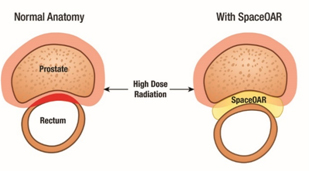 In his presentation, Dr. Fagundes showed how the hydro-gel spacer is placed in a one-time, brief outpatient procedure prior to the start of radiotherapy. It is injected through a needle as a liquid where it expands the space between the prostate and rectum and solidifies into a soft gel–like material. The spacer stays in place for about 3 months and is then naturally absorbed and cleared in the patient’s urine in around 6 months.
In his presentation, Dr. Fagundes showed how the hydro-gel spacer is placed in a one-time, brief outpatient procedure prior to the start of radiotherapy. It is injected through a needle as a liquid where it expands the space between the prostate and rectum and solidifies into a soft gel–like material. The spacer stays in place for about 3 months and is then naturally absorbed and cleared in the patient’s urine in around 6 months.
Clinical trials in Europe and the US have demonstrated that the hydro-gel is safe, and that the space created (typically about 0.5 inches) has the potential to reduce the radiation delivered to the rectum. This could provide an advantage, particularly where higher doses of radiation are used in hypo-fractionation clinical trials.
SpaceOAR is FDA approved and is in use at three proton centers. Others are evaluating the product for possible use.
Bob Marckini’s Lifetime Achievement Award
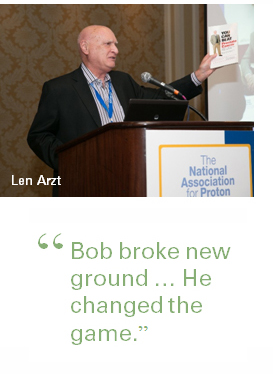 The award was presented on the second day of the conference in the Waldorf Astoria Ballroom. Len Arzt, founding director of NAPT, was first to the podium. He described Bob Marckini as a fellow “elder statesman” in the proton world, “the most dedicated man I have had the privilege to know for his service and contribution to men with
The award was presented on the second day of the conference in the Waldorf Astoria Ballroom. Len Arzt, founding director of NAPT, was first to the podium. He described Bob Marckini as a fellow “elder statesman” in the proton world, “the most dedicated man I have had the privilege to know for his service and contribution to men with
prostate cancer.”
Describing Bob and What He’s Accomplished
Len said, “Bob broke new ground. The one word that best describes him is ‘passion.’ He changed the game. He wrote the best book ever published (on proton therapy), that became ‘the shot heard round the world.’ He helped put proton therapy on the world map. But that’s not all he did. He founded the Brotherhood of the Balloon, an organization that continues to serve and support about 9,000 members and patients globally. As NAPT’s founder, Bob’s proton partner and friend, I’m proud to be presenting him with NAPT’s 2016 Lifetime Achievement Award.”
Stephen Jacobs, long time NAPT board member and consultant, spoke next. He said, “NAPT believes that next to Dr. James Slater, Bob Marckini has done more to increase patient access to proton therapy than anyone else.”
.jpg) Bob’s Real Achievements
Bob’s Real Achievements
Mr. Jacobs recounted Bob’s prostate cancer/proton journey beginning with his diagnosis in mid-2000 through the founding of the BOB and its three part mission: 1) To provide communications, education, and support, 2) To promote proton therapy, and 3) To give back. He further stated, “While this may explain what the Brotherhood does, it falls short of the achievement that Bob has brought forth over the past 16 years. Bob is the go-to man, and I should point out, his daughter Deb Hickey, who is assuming leadership of the Brotherhood, is the go-to woman, when a newly diagnosed family member, friend, colleague, or anyone you know has been diagnosed with prostate cancer. I know from personal experience that Bob is available day and night, not merely to be informative, but to empower the original mission of proton therapy as expressed in the Hippocratic Corpus: ‘The physician must have two special objectives in view with regard to disease, mainly, to do good, and to do no harm.’”
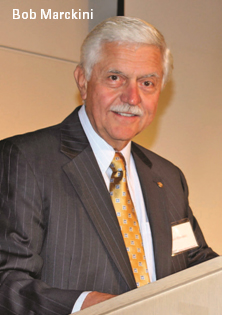
Mr. Jacobs next read some of Deb Hickey’s commentary from the November 2015 BOB Tales newsletter where she honored her dad, documented the sacrifices he’s made, and shared her own perspective on her father’s compassion and commitment to helping others.
Giving Patients Hope
Mr. Jacobs finished by saying, “When Dr. James Slater and his team launched the first clinical proton center in the world at Loma Linda University Cancer Center (LLUCC) in 1990, we called it “a beam of hope.” People like Bob have carried that message of hope to men around the world. Proton patients are our strongest advocates. While some in our proton community speak cautiously about the benefits of proton therapy for certain disease sites, the patients, and the members of the Brotherhood of the Balloon are the proton community’s strongest advocates.
“No one has been stronger than Bob in the mission to bring health, healing, and wholeness to those persons with cancer and other diseases through the clinical application of proton therapy.”


Best Conference to Date
We have covered a tiny fraction of the events of NPC 2016. All who attended seemed to feel it was the best conference to date and they look forward to NPC 2017. We think it’s safe to say, proton therapy is here to stay. It is in the capable hands of a group of highly intelligent, dedicated and committed individuals and institutions that are working together to understand and explore the full power and potential of the proton particle. We, the patients, are the beneficiaries.
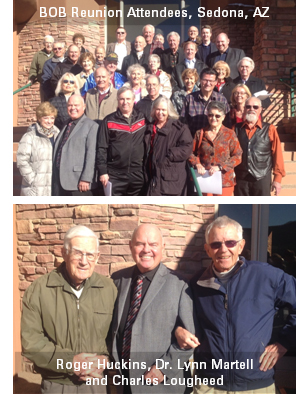
Recap: Proton Patient/BOB Member Reunion, AZ
A proton patient and BOB member reunion was held in Sedona, AZ on February 2. Although the group was planning to golf, the temperature that day threw them for a loop—it was a balmy 19 degrees! Instead, about 40 attendees enjoyed lunch and a special presentation by Dr. Lynn Martell, Dmin, Director Special Services at LLUCC.
In the photo to the left, Dr. Martell poses with two former proton patients. Roger Huckins (left), a retired physician, is 96 years old! He was treated in 1999. He informed his friend Charles Lougheed (right), 88, about proton therapy for his prostate cancer several years later.
Upcoming: Pacific Northwest BOB Reunion and Golf Event, Portland, OR
When:
Thursday, May 26, 2016--|--Golf first tee time: 10:00 a.m.--|--Dinner & Reunion: Doors open at 5:30 p.m. (Dinner at 6:30 p.m.)
Where:
Golf: Chehalem Glenn Golf Course, 4501 E. Fernwood Rd., Newberg--|--Dinner: Portland Adventist Medical Center, 10123 S.E. Market Street, Portland
Details:
These events are open to all BOB members and their guests. The golf event is not a tournament—it’s just for fun. The cost is $40/player; this includes 18 holes with a power cart.
The dinner/reunion will feature a program by Dr. Lynn Martell, D.Min, Director of Special Services at Loma Linda University Health. The full buffet, including two vegetarian entrees, salad, and dessert, is $20/person.
RSVP:
Download, print, and fill out registration forms for the dinner and golf event (Payment for golf may be included with dinner payment). Mail your registration(s) with payment no later than May 15, 2015. Checks should be made out to: Gary D. Brown with “BOB Event” in the memo and mailed to: Gary D. Brown, 115 Nicholas Way, Newberg, OR 97132-2353
For more information, if you need assistance with registration, or if you have questions, email Gary at garyjune1962@gmail.com or call 503-538-8885.


Debate Over PSA Screening—Member Feedback
Since the United States Preventive Service Task Force’s (USPSTF) recommendation to terminate prostate cancer screening and the resultant decline in newly diagnosed prostate cancer patients, we hear from members almost weekly on this topic.
Last month, BOB member Pat Greany, a Ph.D. biologist and retired USDA Research Entomologist responded to a recent article in The Wall Street Journal, “Number of Men Diagnosed with Prostate Cancer Drops.” Shortly thereafter, we received several responses/comments from members—not surprisingly, one of these was Charles Stohrer.
We wrote about Charles in our May 2015 issue of BOB Tales. Charles, who happens to be our 7,000th member, was just 45 when he received his prostate cancer diagnosis. He was shocked—not only by the diagnosis—but that he received it at such a young age. After reading last month’s newsletter, he felt compelled to write to us. Here is his message:
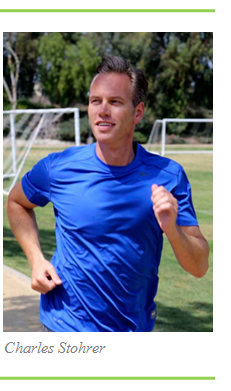 This section got to me. I hear from friends all the time who tell me, “My doctor says I don’t need my PSA checked until I’m 50.”
This section got to me. I hear from friends all the time who tell me, “My doctor says I don’t need my PSA checked until I’m 50.”
Well, if I had followed that advice, I might have not seen the age of 50! I’m grateful that my general practitioner included a PSA screening as part of my annual physical.
Here’s a recap:
My first PSA and baseline was in 2011—3.10. At 43, I had never been tested before. Plus, my dad had average numbers of 4.00 and had never had cancer after three biopsies and a suprapubic prostatectomy. So, I thought 3.10 was just my number.
In 2012, my PSA dropped to 3.04 and the DRE was normal. Again, I was 44—no worries.
In 2013, my PSA was up to 4.06. Again, the DRE was normal. Lucky for me, my doctor was concerned about my PSA. He suggested two weeks of Cipro to rule out an infection. He then re-tested. My PSA was 3.86.
After a visit to a urologist per my doctor’s recommendations, I was diagnosed with Gleason 7 prostate cancer. I believe the early baseline PSA saved me.
Tennessee Legislative Battle for Proton Therapy
If you are a BOB member living in Tennessee, you received an email from Deb Hickey last month. The email was sent on behalf of BOB member, Don Denton, Chairman, Tennessee Cancer Patient Coalition, an organization seeking equal access to all treatments for cancer patients. We asked for Tennessee members to please contact their district’s representative in support of HB 1441, aka
“The Proton Therapy Bill.”
Tennessee is fortunate to be at the forefront of proton therapy. It has two operating proton centers, Provision in Knoxville and St. Jude in Memphis, plus another one under construction, Scott Hamilton Proton Center south of Nashville. Additionally, the next generation proton equipment is being designed and produced near Knoxville, which will make this world-class treatment more accessible and less expensive.
Here’s the Irony
Tennessee approved the construction of these proton centers, but cancer patients in the 19-64 age bracket are effectively blocked from benefiting from them because insurance won’t cover the treatment! The good news is the State Legislature is considering the HB 1441 bill, which prohibits a health benefit plan that provides coverage for radiation therapy from requiring proton radiation therapy to meet a higher standard for coverage than the plan requires for any other radiation therapy treatment. It represents a small but important step toward obtaining insurance coverage in the future. The bill is being debated in the 2016 session.
The insurance lobby has a powerful influence over Tennessee politics. Let’s hope that this year the state Representatives and Senators will “do the right thing” by supporting patients who choose proton therapy to treat their cancers.
“Breathe In, Breathe Out, Move On...”
A Fond Farewell to an “Honorary” BOB Member
Our friend, Jeannie Chase (you would recognize her name if you’ve had medical insurance issues), uses the title of this section, a famous Jimmy Buffet quote, as her email signature. It’s been scrawled in large italics underneath her name for as long as we can remember. It’s just like Jeannie to remind everyone that life is short; make the best of it; and what doesn’t kill you makes you stronger.
Jeannie has helped our organization for over 10 years as a volunteer medical insurance specialist. She’s answered countless emails. She’s gone back and forth with prospective proton patients (many of you) hundreds of times. She’s spent hours helping strangers navigate the confusing and often frustrating insurance labyrinth. She researched and utilized her extensive experience and expertise to compile, with Deb Hickey, our 80-plus-page Insurance Appeals Strategy Document as a tool to help appeal insurance denials.
Jeannie has become a dear friend. And after so many years of selfless and tireless assistance, she has recently “retired” from her volunteer work with the BOB. Though we know it’s time and we know she deserves it, our hearts are heavy. We will never forget her commitment to this “ministry” and we will miss our daily communications.
Thom Chase
In early 2003, Jeannie’s husband, Thom, was diagnosed with prostate cancer. Though it wasn’t a complete surprise, as Thom’s father had had prostate cancer, the news was still alarming. Exposure to Agent Orange in Vietnam also may have contributed to his prostate cancer development.
Through an Internet search, Thom found the Brotherhood of the Balloon website. He spoke with Bob Marckini and several men who had gone through various treatments.
“We decided that proton was the best treatment available that offered extremely good outcomes with minimal side effects,” Jeannie said. “Thom was then 56. Incontinence and impotence didn’t seem like much of a lifestyle to look forward to.” At the time, the two lived full time on a boat, and Thom was a helicopter pilot for The Port Authority of NY/NJ. They didn’t want to alter their lives, give up their dreams, or limit themselves. So they hoisted their floating home onto land, packed up their belongings, and drove cross-country with their cat to Loma Linda, California.
The Treatment that Changed Their Lives
Thom’s proton treatment started on June 3, 2003. “I will never forget the care Thom received at LLUCC—it was inspiring and uplifting,” Jeannie said. “We survived cancer as a couple, and became closer and more important to each other afterward,” Jeannie said.
Throughout Thom’s treatment and every day thereafter, Jeannie stood by his side, ever the doting wife and caregiver. A spiritual person, with a contagious sense of humor, she kept her husband’s spirits high and never doubted that Thom would thrive once again and that the two would enjoy many more years together.
Five Great Years . . . Then Everything Changed
Thom and Jeannie came away from their Loma Linda experience with a renewed sense of compassion and hope. They continued to support LLUCC with monthly direct deposit contributions to proton research; by distributing copies of Bob’s book; and by sharing their experience of proton treatment and LLUCC with others. And again, Jeannie, a medical insurance specialist, helped support BOB members who were denied insurance for proton therapy for years after Thom was treated. Dozens of men won their appeals and went on to have proton therapy as a result of her efforts.
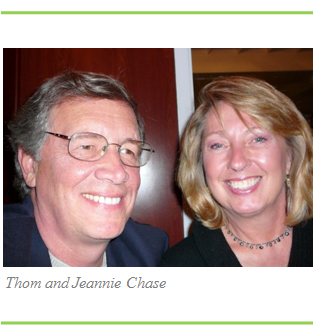 After Thom’s proton treatment, he and Jeannie enjoyed many years together like Jeannie had hoped. They moved to Florida (a lifelong dream of Thom’s), went to the beach, attended concerts and plays, and entertained friends and family in their home.
After Thom’s proton treatment, he and Jeannie enjoyed many years together like Jeannie had hoped. They moved to Florida (a lifelong dream of Thom’s), went to the beach, attended concerts and plays, and entertained friends and family in their home.
Tragically, in 2008, Thom was diagnosed with a brain tumor—a glioblastoma multiforme grade 4, the most aggressive form. He passed away in May 2010 after an 18-month battle. “His brain cancer was a primary site and in no way related to his prostate cancer,” Jeannie said. “He fought hard.”
Blue Skies and Calm Seas
Jeannie talks about Thom often. She recalls his sense of humor. “It kept us going; he never lost it,” Jeannie said. “We cracked jokes together when he was at his worst.” She talks earnestly of Thom’s love of boating, biking, flying, nature, travel, the beach, and music—especially Jimmy Buffett. She once told us a grief counselor helped her to understand the following:
The spirit, the essence of Thom, the things I love most about him are his legacy … And while his physical body is gone, the best and most important parts of him are in me, and nothing can take that away. I think this is true for all the people we love and lose. You carry their spirit in you. That is what we need to honor.
“Thom has a wonderful legacy to share with anyone diagnosed with prostate cancer,” Jeannie told us. “Have proton treatment! You never know what your future holds.”
“As Thom would always say, ‘Blue skies and calm seas’…”
Moving On
Today, Jeannie is enjoying life in Sarasota, FL where she spends a lot of time with friends. She has gotten so close with Deb; they talk about visiting each other (in Florida, of course) and often sign their emails, “With love!” What could be a better end to 10 years of “working” together?
In her last “official” email to Deb, Jeannie wrote:
Your friendship means so much to me. This isn’t goodbye to our friendship … it’s just going into a new phase.
We couldn’t agree more—bless you and thank you, our dear friend.
.gif)
We have been producing BOB Tales newsletters monthly for the past 15 years. Over the years there have been some important articles that many new members have not seen, and some older members may have forgotten. So, we decided to periodically re-run some articles from past newsletters. This one is from December 2010.
Not All Doctors Are Created Equal
Every time we think we’ve heard it all, another unbelievable story comes to us. In last month’s BOB Tales, we told you about two men who read Bob Marckini’s book, took his advice and had a second lab read their pathology reports, only to learn they did not have prostate cancer. Both were scheduled for surgery, and both could have had their prostates removed needlessly had they not sought a second opinion.
Last week we received an email from a fellow who told us that he had a biopsy because of a rising PSA. When his urologist called him after the biopsy, he said, “Good news, there is no sign of prostate cancer.” Greatly relieved, this man celebrated with his wife and family.
A few days later, he called his urologist and asked for a copy of the pathology report for his records. When it arrived by mail, he read it and received the shock of his life. It clearly stated that two of the biopsy samples were cancerous. He called his primary care physician and learned that the urologist had also told him there was no cancer.
When the dust settled, the urologist admitted he had made a mistake and apologized. But the ramifications of this mistake could have been disastrous.
Our Most Important Advice
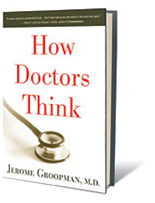 In Bob’s book, he writes at length about how important it is that each patient takes control of his/her health. Don’t assume the doctor is infallible. Do your homework. Ask questions. Get second and third opinions.
In Bob’s book, he writes at length about how important it is that each patient takes control of his/her health. Don’t assume the doctor is infallible. Do your homework. Ask questions. Get second and third opinions.
We recommend the book, “How Doctors Think,” by Jerome Groopman, M.D. In the book, Dr. Groopman gives numerous examples of how many doctors make diagnoses and treatment decisions often on minimal information and minimal time spent with the patient. Incorrect diagnoses are much more common than you think.
In one chapter, Dr. Groopman writes about variations in reading X-rays and mammograms: “In screening mammograms of 148 women, the fraction of patients actually having cancer who were correctly diagnosed varied from 59 to 100 percent, and the fraction of patients without disease who were correctly diagnosed as normal ranged from 35 to 98 percent. Overall the accuracy varied from 73 to 97 percent.”
In another chapter, Groopman writes, “A close friend, in Los Angeles, a hard-driving businesswoman in the entertainment industry, repeatedly told her doctor about the aches in her breasts. Her mammogram was read by the radiologist as normal, and her persistent complaints were dismissed. She was told, ‘Nothing is wrong with you.’ Her aches, the doctor said were caused by stress. Only after going to another doctor who performed more tests, was the cancer identified. Her diagnosis was delayed by nearly two years, and the cancer was found in more than a dozen lymph nodes.”
Groopman believes that patients should always ask questions and they should get second and, even third opinions on important issues.
In this era of managed care, things will only get worse. It’s even more important for all of us to take charge of our healthcare.
BOB COMMENT:
Most doctors welcome another physician’s input and should support your decision to get a second opinion (if they don’t, we’d consider that a warning sign). He or she may even recommend another physician. If not, we suggest contacting local hospitals, medical clinics, and cancer centers. You can also find medical associations online who offer searchable databases of doctors such as the American Medical Association. Also, it’s never a bad idea to ask family and friends for recommendations.
To prepare for a second opinion, make sure to have all of your relevant medical records and test results sent to the new medical office well before your visit.

Members Tell Us Why They Gave Back
Why did you make a contribution to proton research?
We were recently informed that BOB member, Don Giffels (Harbor Springs, MI), had made a year-end gift to proton research at LLUCC and the Robert J. Marckini Chair in Bob Marckini’s honor. After thanking him for his contribution, Deb asked him why he chose to donate to proton research and why he wanted to honor her father. Don’s response is below:
Deb, your father, along with the great staff at Loma Linda, saved my life. Why did I want to honor your dad? When I was diagnosed, I read his book; I reviewed the website that he created, including many member testimonials that related to my history of recurrent cancer after prostatectomy; and from there, I made an appointment at Loma Linda University Cancer Center to have proton therapy.
Coincidentally, my doctor had to change the appointment at the last minute, which required me to change my plane reservations. With this change, I was present at one of the Wednesday night meetings—and Bob was the speaker. If ever I had a doubt about my decision, it was dispelled that night.
As Bob said to me, ‘nothing happens by accident.’
My old urologist promised me that I would be dead within seven years after IMRT, with lots of complications. After proton therapy, I had no complications. Nine years later, I’m still kicking!
That is why I chose to give back.
Why do you feel it’s important to contribute to proton research?
Ed Solomon completed proton therapy in February 1997. “I have had no problems related to my prostate cancer in 18 years. My last PSA was measured in September, 2015—it was 0.03.”
Ed has been contributing to proton research at Loma Linda University Cancer Center for the past 15 years. We asked him why he has been so diligent in his support.
I’m grateful for what they did for me all those years ago. But more importantly, I want to support the use of proton therapy, not only for prostate cancer, but for other diseases like brain, esophageal, and breast cancer. The most important thing about protons is that the treatment is non-invasive. Therefore, so many potential risks are avoided.
I had a friend with a soft tissue sarcoma. He underwent surgery (and IMRT radiation). During the surgery, he contracted an infection. That infection eventually killed him. There are other examples out there where proton therapy can replace invasive treatments and not only save more lives, but preserve the quality of those lives. Supporting this effort is imperative.
Since his proton treatment, the quality of Ed’s life has been great. And he’s giving back in more ways than one. He served on the LLUCC International Advisory Council for many years. Ed has also been part of a team from The Seal Beach, CA Navy Golf Course providing golf clinics for the Wounded Warrior Unit at the Marine Corps Base, Camp Pendleton, disabled veterans from the Long Beach, CA, VA Hospital, and sight-impaired children from the Los Angeles, CA Junior Blind Center.
Do You Think It’s Important to Give Back?
Write to Deb Hickey and tell us why!
Make a Future Gift:
Contact Todd Mekelburg at the Office of Planned Giving at Loma Linda University Health at 909-558-4553 or email legacy@llu.edu.
Donate to the Marckini Chair:
- Send a check made out to “LLUCC Proton” to Loma Linda University Health, Office of Philanthropy, P.O. Box 2000, Loma Linda, CA 92354. Memo line: “Marckini Chair.”
- Donate online or call Elvia DeHaro at 909-558-5010.
Other Ways to Give:
Contact Matt Miller at the Office of Philanthropy at Loma Linda University Health at 909-558-3284 or email matmiller@llu.edu.

Misdiagnoses in the U.S.
According to the Washington, D.C. Institute of Medicine, most Americans will be diagnosed incorrectly at least once during their lives. A mistaken diagnosis can result in missed or unnecessary treatments and traumatize patients.
In a story above, we wrote about two men who were diagnosed with prostate cancer and were scheduled for surgery. When they had their biopsy slides reviewed by one of the premier pathology institutions, they were told no cancer was present. In both cases, follow up saturation biopsies (24 samples) revealed no cancer present. While misdiagnoses like these are rare, it does happen, especially in the reading of biopsy slides, a subjective process at best. This is why it always makes sense to have biopsy slides read by a second pathologist, preferably one with considerable experience.
Do Lemons Fight Cancer?
We’ve all heard about the benefits of eating specific types of fruits and vegetables for fighting disease, but have you heard the recent claim that lemons can cure cancer? While this is not proven, some studies show that eating, juicing, and/or zesting lemons onto your food may help prevent cancer and other illnesses.
The Real Research
Several substances found in lemons and other citrus fruits have cancer-fighting potential. The two most commonly studied are limonoids and pectin. Limonoids, found in the skin and seeds, are being studied as both preventative and a treatment for cancer. Modified citrus pectin, derived from the natural pectin found in the pulp and peel, may help to reduce the metastasization of cancer cells. Further research is needed.
Other health benefits of lemons include:
- They are antibacterial and antiviral;
- They aid in digestion;
- They can be used to treat acne;
- They help regulate blood pressure;
- They fight against parasites and worms;
- They act as antidepressants and help reduce stress.
BOB COMMENT:
Though some studies suggest that lemon extract can successfully destroy malignant cancer cells, be cautious. While the phytochemical limonene, which is extracted from lemons, is showing promising anticancer activities, the reports are still speculative.
Prevent Memory Loss as You Age
While some causes of memory loss are genetic, there are still steps you can take to maintain or improve upon your memory as you age.
According to scientists, the brain is flexible and capable of growing new cells and making strong new connections between them, at any age. That means some lifestyle changes can help protect you from developing memory problems. Start with these:
- Eat healthy: Eat fresh produce, lean protein, good fats, 100 percent whole grains, and a little fat-free dairy.
- Exercise: Aim for 30 minutes every day. Exercise enlarges the hippocampus, the brain region responsible for memory.
- Learn something new: Try a new skill or game. Working your brain creates more connections that help enlarge your hippocampus.
- Manage stress: Stress is the greatest cause of memory loss linked to a shrinking hippocampus.
- Maintain your blood sugar: Slightly raised sugar levels can affect your memory. Excess blood glucose causes inflammation, which damages brain cells.
- Include magnesium in your diet: This mineral ensures strong links between your brain cells. Eat brown rice, almonds, hazelnuts, spinach, shredded wheat, lima beans, and bananas.
- Take vitamin D3: This vitamin can protect your DNA.
- Sleep: Sleep triggers changes in the brain that solidify memories.
.jpg) How to Catch a Cold
How to Catch a Cold
A reader asked Marilyn vos Savant, in her weekly Parade Magazine column, “Can you catch a cold if you’re not around other people or anything a sick person may have touched?”
Her Answer: Nope. Although cold viruses can survive for a while after a sneeze or a cough, they do not live independently in the air, either indoors or outdoors. So you can take a long, solitary hike in a freezing rain, then return home to alternately heat and chill yourself by jumping in and out of your backyard hot tub while the rain turns to snow, and you can still be sure that you will not catch a cold.
Series: Top 20 Most Common Health Questions
Last year, we began a series on the top 20 most common health questions (and answers) from Business Insider Magazine. Here is another question from that list.
Does sugar cause hyperactivity?
No. Following a review of 23 studies, a report published in the Journal of the American Medical Association concluded that sugar “does not affect the behavior or cognitive performance of children.”
The age-old myth that kids misbehave when they eat large amounts of candy, cookies, and other junk food, could be related to the type of events where these foods are typically served. For example, kids are more wound-up at birthday parties and during Halloween when sweet treats tend to flow freely.

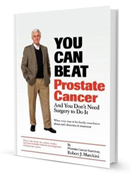
Amazon Stats
Bob Marckini’s book, “You Can Beat Prostate Cancer And You Don’t Need Surgery To Do It,” is in the No. 3 position on a search for “prostate cancer” on Amazon.com out of more than 30,000 search results. The book has 248 reader reviews—still more than any other book in the top 50.
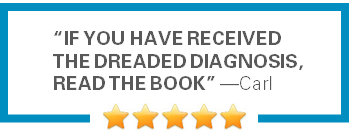 Here is a recent Amazon review.
Here is a recent Amazon review.
It has been five years since my prostate cancer diagnosis. I still remember those first weeks—trying to make sense of the endless information available while in a state of shock. This book was a Godsend—the simple story of a man who found himself in the same situation, researched his options, and made the obvious decision. If you have been diagnosed with prostate cancer, do yourself a favor and read this book.
Your Local Library
Looking for new ways to educate others about proton therapy for prostate cancer? Call your local library and ask if they have Bob’s book in stock. If not, ask them if they would accept a free copy. Mention your personal thoughts on the book and your proton therapy experience. You may also want to tell them that the book is available on Amazon (in the top five books on prostate cancer out of 30,000 results).
Free Book to the First 10 Responders
If your library agrees to display Bob’s book, please let us know. We will send a free copy of the book to the first 10 people to respond. If you have your own copy to donate or you choose to buy Bob’s book to donate to your library, please let us know. We will enter your name into a drawing to receive a signed copy.
Buy Online
Paperback: $19.00--•--Kindle: $9.99--•--NOOK Book: $9.99--•--Apple iBook: $9.99
Buy in Bulk
Email DHickey@protonbob.com for a discount price list. Proceeds from book sales support proton therapy research through the Robert J. Marckini Endowed Chair at LLUCC.
Spanish Translation Available
Thanks to the generosity of BOB member Pierre Rogers, the book has been translated into Spanish and is available to the Latin community around the world! Buy the print version or the eBook.
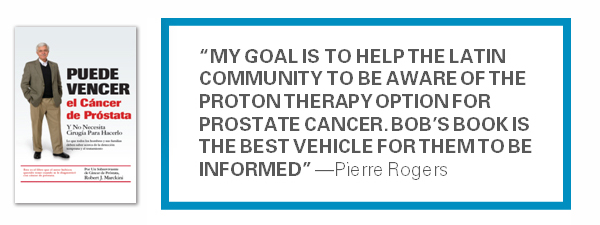
Help Us Help Others
Was Bob’s book helpful in making your proton treatment decision? If so, please post a review on Amazon to help others find it more easily. The more quality reviews, the higher the book ranks in Amazon’s search engine.
Once you are logged into your Amazon account, click here and click “Create your own review” button. Don’t forget to rate the book from 1 to 5 stars!

Breast Cancer Not Limited to Women
One thing we learned at NPC 2016 from a representative of the Susan G Komen Foundation is that men can be diagnosed with breast cancer too. In 2016 it is estimated that 246,660 women will be diagnosed with breast cancer and 40,450 will die from it. Also, 2,600 men will be diagnosed and 440 will die from breast cancer in the U.S.
Incredible Facts about the Human Body
This is part of a four-part series on incredible facts about the human body. The human body is, without a doubt, the most incredible and complex “machine” on the face of the planet. In an age where mankind sends people into space and keeps coming up with greater inventions, the human body is still full of undiscovered mysteries. In this series, we share some of them with you:
Part IV of IV
- There are approximately 100 billion neurons in the human brain, which is roughly the same as the number of stars in the Milky Way.
- Numerous times today you could have developed cancer. Sometimes when a cell is about to go cancerous, it will commit suicide to keep itself from harming other cells.
BOB COMMENT:
We remember hearing a talk from Dr. James Slater on this topic a few years ago. His message was to keep your immune system strong. It’s your immune system that fights off cancers and other diseases throughout your lifetime. You can keep your immune system strong through proper lifestyle, which includes diet, exercise, weight management, not smoking, and positive mental attitude. Much of what we focus on in our BOB Tales Health section is about diet and lifestyle to maintain a strong immune system.
 Educate Fellow Drivers
Educate Fellow Drivers
Build awareness about protons with a BOB bumper sticker. Send $6.00 to Bob Hawley: P.O. Box 45, Mt. Angel, OR, 97362 and he’ll mail you one. Or, email Bob at a502sfga@yahoo.com.
All proceeds go to the Robert J. Marckini Endowed Chair for proton therapy research at LLU Health.
Facebook—Your Comments
Facebook offers us the opportunity to interact with an extraordinarily expansive universe of people—people beyond our community of 8,000-plus members. By connecting with friends on Facebook and thus connecting with their Facebook friends and their Facebook friends (and so on), we are leveraging our proton message exponentially.
We also encourage fans to comment on and share our posts with others. Below are just a few BOB Facebook fan comments.
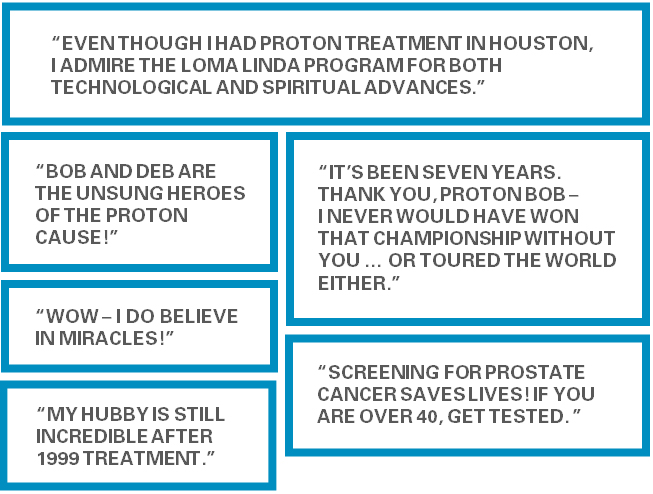
Every day we are seeing more and more “post shared” notices which means our Facebook messages are being seen by thousands of others who may not be aware of proton therapy. Thank you, BOB Facebook fans!
If you are not on Facebook, join now and become a BOB fan. If you are already on Facebook, visit the BOB page and click the “like” button to become a BOB fan. Encourage your friends to do the same. We have 727 fans. Help us reach 1,000 by the end of 2016!
Dog Sniffs Out Cancer Better than Lab Tests
Lucy, a cross between a Labrador retriever and an Irish water spaniel, failed out of “dog school” because she was too excitable and curious. Random scents distracted her. This got her into trouble because she didn’t follow the class rules.
Her owners learned that Lucy was better suited for another role—sniffing out cancer. For the next seven years, she learned to sniff out bladder, kidney, and prostate cancer. She even became part of a study.
Over the years, Lucy has detected cancer correctly more than 95 percent of the time—that’s better than some lab tests! She is part of one of the largest clinical trials of canine cancer detection by Medical Detection Dogs, a British organization.
Estate Planning Hints: Capital Gains Tax Bypassed
BOB Member Ron Hendricks is Director of Gift Planning for Trinity Western University. He regularly copies us on his “News from Ron” mailings, which are helpful hints on estate planning to the readers of his newsletters. We have found Ron’s suggestions to be timely and beneficial. With his permission we periodically share some of his wisdom with our membership. This segment is called “Capital Gains Tax Bypassed.”
George and Martha were nearing retirement. Over the years, with the help of their financial advisor, they made solid investments in securities and built a sizable portfolio. While their investments increased substantially in value, their potential capital gains tax bill was rising. Now with retirement on the horizon, they were looking for a way to sell their highly appreciated stock, generate income for their future and avoid paying high capital gains tax.
George: For many years we had supported the work of our favorite charity. Through an
email we learned that we could make a gift of our appreciated stock to charity and bypass the potential capital gains tax cost we were facing. I was thrilled to learn that after transferring our portfolio to a charitable remainder trust, the trust would sell the stock
tax free.
Martha: I liked the fact that the trust would provide us with income for our retirement years. If something happened to George, I would still be taken care of for the remainder
of my life.
George and Martha decided to make a gift of their appreciated stock to establish a charitable remainder unitrust. They were thrilled at the prospect of creating future income while bypassing capital gains tax.
George: When I heard that in addition to the other benefits we would receive a charitable deduction for our gift, it was just icing on the cake! I wondered why everyone nearing retirement doesn’t set up a charitable trust.
BOB COMMENT:
You can likely create a charitable trust to support your favorite charity. We encourage you to consider giving back to Loma Linda University Health, either to help fund proton research (via the Marckini Chair) or to Vision 2020. To learn more, contact Todd Mekelburg at the Office of Planned Giving at 909-558-5376 or email legacy@llu.edu.

Last Month’s Brain Teaser
These words follow a rule: beech, fir, pear and plum. These words do not follow it: birch, cherry, elm and palm.
Can you find the rule?
Answer: The first group of words has a homophone—an unrelated word that sounds the same (beach, fur, pair or pare, plumb); the second group does not.
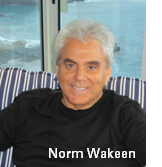 Winner: Norm Wakeen of Surprise, AZ is a four-time brain teaser winner! We asked Norm what he wanted to do with his fourth signed book (he gave the second one to his cousin and the third to any BOB member on his behalf).
Winner: Norm Wakeen of Surprise, AZ is a four-time brain teaser winner! We asked Norm what he wanted to do with his fourth signed book (he gave the second one to his cousin and the third to any BOB member on his behalf).
“Please send this copy to me. I have someone I want to give it to,” Norm said.
Norm was treated with proton therapy in 2007. Today, he’s enjoying retirement by playing golf and cooking for his wife, Catherine. Congratulations again, Norm!
New Brain Teaser
From the following group of letters, remove twelve letters so the letters that remain, in order, will spell a familiar word:
TAWFEALMVIELLIEATRTWEORRSD
Answer next month: Send your brain teaser answers to DHickey@protonbob.com for a chance to win a signed copy of Bob’s book.
Courtroom Humor
These are from a book called “Disorder in the American Courts.” They are testimonies people actually said in court, word for word, taken down and published by court reporters who had the torment of staying calm while the exchanges were taking place.
Attorney: What gear were you in at the moment of the impact?
Witness: Gucci sweats and Reeboks.
—
Attorney: What is your date of birth?
Witness: July 18th.
Attorney: What year?
Witness: Every year.
—
Attorney: Now doctor, isn’t it true that when a person dies in his sleep, he doesn’t know about it until the next morning?
Witness: Did you actually pass the bar exam?
—
Attorney: Were you present when your picture was taken?
Witness: Are you kidding me?
—
Attorney: She had three children, right?
Witness: Yes.
Attorney: How many were boys?
Witness: None.
Attorney: Were there any girls?
Witness: Your Honor, I think I need a different attorney. Can I get a new attorney?
The Cheating Engineer
Two young men applied for an engineering job. Both applicants, having the same qualifications, were asked to take a test by the department manager. Upon completion of the test, they missed only one question.
The manager went up to one of the guys and said, “Thank you for your interest, but we’ve decided to give the job to the other applicant.”
The engineer said, “But why? We both got nine questions right.”
The manager said, “We made our decision not on the correct answers, but on the one you missed.”
The engineer asked, “And how would one incorrect answer be better than the other?”
The manager replied, “Well, the other engineer put down on question number five, ‘I don’t know,’ and you put down, ‘neither do I.’”
Quote of the Month
“We shall never know all the good that a simple smile can do.” —Mother Theresa

Five Choices You’ll Regret Forever
“I am not a product of my circumstances. I am a product of my decisions.” —Stephen Covey
This article appeared in Forbes Magazine (Jan. 26, 2016). In summary, a recent study from Columbia University showed that most of us are bogged down with decisions—more than 70 a day, causing decision fatigue, where your brain tires like a muscle. A study at the University of Texas reports that even when our brains aren’t tired, they can make it difficult for us to make good decisions.
Bronnie Ware, a palliative care nurse, worked for years with people who were three to 12 months from death. She often asked them about their greatest regrets, and she said that she heard the same five regrets over and over. By paying attention to these five regrets, we can make certain we make good choices and don’t fall victim to them ourselves:
- They wish they hadn’t made decisions based on what other people think. When you do this you fail to live up to your morals. Your desire to make yourself look good compromises your ability to stay true to yourself and, ultimately, to feel good.
- They wish they hadn’t worked so hard. Especially when you do so at the expense of the people closest to you.
- They wish they had expressed their feelings. Most bottle up their feelings and hide their emotions. Though it’s often hard to do, it’s important to let your feelings be known. It forces you to be honest and transparent.
- They wish they had stayed in touch with their friends. Relationships with friends are among the first things we give up when we are busy. But spending time with friends is a major stress buster. Close friends bring you energy, fresh perspectives and a sense of belonging.
- They wish they had let themselves be happy. Learning to laugh, smile, and be happy, especially during stressful times is a challenge, but it’s worth the effort. How we react to pain and end-of-life difficulties is under our control.
People who lived the longest (over 100 years old), according to the article, are those who said they had no regrets.
Low PSAs to all!
Bob Marckini and Deb Hickey
To print the BOB Tales newsletter or view the newsletter with a larger font size, click here for the PDF file.
NO MEDICAL ADVICE: Material appearing here represents opinions offered by non-medically-trained laypersons. Comments shown here should NEVER be interpreted as specific medical advice and must be used only as background information when consulting with a qualified medical professional.
